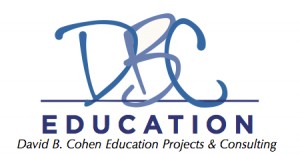Better late than never, and following a tragic loss of an unsaved draft, this post will conclude my review of session at the Learning Forward Conference in Nashville. I attended Monday through Wednesday, and wrote two prior posts (here, and here) about some of the sessions (including one I co-presented) and keynotes.
My first day here in Nashville I chose sessions dealing with virtual networking to promote teacher leadership for systemic change, looking for ways to connect teachers around common needs and interests in improving our schools and our profession. The second day I ended up at sessions more focused on professional learning with schools and districts, though teacher leadership is of course an essential element in expanding school and systemic capacity for ongoing learning.
In one afternoon session I learned about the work of a school in Albequerque that using technology to fill in gaps in learning networks. Generally, teachers talk about not having enough time to do everything we need to do. By seeking technological solutions, school leaders were able to augment face-to-face work among teachers. Sometimes the tool allows for asynchronous continuation of the conversations. Sometimes the tool allows others to have access and input even if they weren’t part of a prior meeting. Sometimes the tools allow teachers to gather and curate evidence of practice, and resources to promote improvement, or collect information and tools of interest to the group. I also appreciated the way that the presenters made use of various technology with those of us attending the session, so that we could experience and not just hear about some of the websites and applications they’ve found useful. And finally, the school principal in the group emphasized that educators changing the way we learn and collaborate must lead to better learning for students, and furthermore, she made clear that her primary concerns related to helping students in ways not assessed on standardized tests. One additional note: this work took place in a context where state policy provides for the attainment of a license and a higher salary as a master teacher, provided that the early-career teacher has a dossier of evidence of professional advancement. This is an example of how state policies and local practices can work in complementary ways to improve education.
Another session I attended the same day featured a rapid-fire, detailed, and highly professional summary of what Long Beach Unified School District has done to improve professional learning in a very large district. Their ambitious program builds upon an already successful and popular system of professional growth. The district is interested in giving teachers more customized offerings and more information about what’s available through the district and beyond. Their approach is informed by the kind of design thinking associated with the Stanford School of Design (d.school) and companies like IDEO; they start with empathy, understanding the needs, habits, skills and inclinations of the customer or user of a product. Long Beach Unified invested tens of thousands of dollars in talking with teachers at length to understand their perspective and solicit their input. After empathy comes a cycle of brainstorming, testing out prototypes rapidly with the understanding that fast and frequent failure in the testing phase is actually productive. That they’ve been able to make this happen in a policy climate of hyper-accountability and test-based reform is a testament to the quality of their direction and administration before they even started. Follow their progress on Twitter and on their blog.
The conference concluded with a keynote by Steve Gross, whose job title is Chief Playmaker for Life is Good. He emphasized kids’ “superpowers” – their creativity, desire for connectivity, capacity for trust and love and learning, and resilience in the aftermath of trauma. He comes to his work from a more clinical background dealing with children who’ve experienced trauma, and related how, if you discuss children and trauma and focus on negatives with an air of seriousness, people will pay close attention; conversely, if you approach children’s health, wellbeing, and learning from a play-based, fun-building perspective, not only are you taken less seriously but people will wonder what you’ve been smoking. To get a better sense of his message and style, watch some of the video below. Or watch all of it if you have the time.
Overall, my time at the Learning Forward Conference was certainly well-spent. I appreciated the opportunity to learn from my peers around the country, and found plenty of useful information and chances to build connections. Best of all, I found that everyone I talked to was more or less on the same page, looking for ways to help students learn more effectively and in ways that really matter, beyond the short-term and counterproductive pursuit of mere test scores.
Steve Gross: How Joy and Optimism Ignite the Best in All of Us [Full Keynote] from BrightSightGroup on Vimeo.

